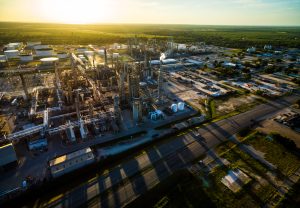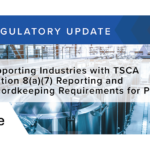
Phase 2 Environmental Site Assessments (ESAs) play a crucial role in evaluating and managing potential environmental risks associated with contaminated sites in Tulsa. By conducting thorough investigations, these assessments provide essential information for informed decision-making, risk mitigation, and regulatory compliance in various industries. Understanding the purpose, process, regulatory framework, and importance of Phase 2 ESAs is vital for businesses, developers, lenders, and other stakeholders involved in property transactions or development projects. This article aims to provide a comprehensive overview of Tulsa Phase 2 Environmental Site Assessments, highlighting their significance and addressing potential challenges and solutions in conducting these assessments.
Understanding Phase 2 Environmental Site Assessments
Definition and Purpose of Phase 2 Assessments
Phase 2 Environmental Site Assessments are crucial investigations conducted to delve deeper into the presence and extent of contamination identified during a Phase 1 ESA. Building upon the findings of the initial assessment, Phase 2 assessments aim to provide a comprehensive understanding of the potential risks posed by the contaminants to human health and the environment. By evaluating the contamination levels more thoroughly, these assessments help in determining the necessity for remediation or mitigation measures, and offer valuable recommendations for effective site management and regulatory compliance.
Moreover, Phase 2 Environmental Site Assessments play a pivotal role in ensuring the safety and sustainability of land use practices. By identifying and assessing the contaminants present in the soil, groundwater, or air, these assessments contribute to the protection of ecosystems, public health, and overall environmental quality. Through detailed investigations and analysis, Phase 2 assessments facilitate informed decision-making processes regarding the future use and development of potentially contaminated sites.
Key Components of Phase 2 Assessments
Phase 2 Environmental Site Assessments encompass a series of essential components that work cohesively to gather pertinent data and uncover potential risks associated with contamination. These components are meticulously designed to provide a comprehensive overview of the site’s environmental condition and include:
- Initial site inspection and sampling: Conducting a thorough examination of the site to identify potential sources of contamination and collecting samples for further analysis.
- Laboratory analysis and data interpretation: Testing the collected samples in accredited laboratories to determine the presence and concentration of contaminants, followed by interpreting the results to assess the level of risk posed.
- Report preparation and recommendations: Compiling all findings, analysis, and conclusions into a detailed report that outlines recommended actions for remediation, mitigation, and ongoing site management strategies.
The Process of Phase 2 Environmental Site Assessments in Tulsa
Initial Site Inspection and Sampling
The first step in Phase 2 ESA is an initial site inspection, where environmental professionals conduct a thorough site investigation. This may involve visual assessments, collection of soil, groundwater, or other environmental samples, and the identification of potential sources or areas of concern. During the site inspection, professionals also consider factors such as historical land use, nearby properties, and geological features that could influence the site’s environmental condition.
Furthermore, the sampling process is crucial in determining the presence and extent of contamination. Environmental professionals use specialized equipment and techniques to collect samples in a precise and representative manner. These samples are then carefully labeled, preserved, and transported to the laboratory for analysis.
Laboratory Analysis and Data Interpretation
Following the sample collection, the collected samples are sent to accredited laboratories for analysis. Environmental professionals carefully interpret the laboratory results to identify the type and extent of contamination present, assess potential risks based on applicable regulatory standards, and make informed recommendations for further action. The laboratory analysis may involve various tests such as chemical analysis, microbial testing, and geotechnical assessments to provide a comprehensive understanding of the site’s environmental condition.
Moreover, data interpretation is a critical aspect of the Phase 2 ESA process. Environmental professionals use their expertise to analyze complex data sets, identify trends or anomalies, and draw meaningful conclusions regarding the site’s contamination levels and associated risks. This detailed analysis forms the basis for developing effective remediation strategies and risk management plans.
Report Preparation and Recommendations
Based on the findings from the site inspection and laboratory analysis, the Phase 2 ESA report is prepared. This report includes detailed information about the site’s environmental condition, contamination levels, potential risks, and recommendations for remediation or management actions to mitigate those risks. The report serves as a valuable tool for decision-making and regulatory compliance. In addition to outlining the current state of the site, the report may also include historical data, regulatory requirements, and best practices for environmental stewardship to guide future site development and operations.
Regulatory Framework for Phase 2 Assessments in Tulsa
Federal and State Environmental Laws
Phase 2 Environmental Site Assessments in Tulsa are conducted in accordance with various federal and state environmental laws. These include, but are not limited to, the Comprehensive Environmental Response, Compensation, and Liability Act (CERCLA), the Resource Conservation and Recovery Act (RCRA), and the Oklahoma Environmental Quality Code.
Role of the Oklahoma Department of Environmental Quality
The Oklahoma Department of Environmental Quality (ODEQ) plays a significant role in regulating and overseeing Phase 2 ESAs in Tulsa. ODEQ sets the standards and guidelines for conducting these assessments, ensures compliance with environmental laws, and may provide guidance or assistance throughout the assessment process.
Importance of Phase 2 Environmental Site Assessments
Risk Management and Liability Protection
Phase 2 Environmental Site Assessments are crucial for managing potential risks associated with contaminated sites in Tulsa. By identifying and assessing the contamination levels and associated risks, businesses and property owners can take appropriate measures to mitigate those risks, protecting human health, and avoiding potential liability.
Ensuring Environmental Compliance
Environmental regulations and standards continually evolve, and compliance with these regulations is essential for businesses and developers in Tulsa. Phase 2 ESAs help ensure compliance with applicable environmental laws, regulations, and guidelines, enabling businesses to operate sustainably while minimizing the potential for negative environmental impacts.
Challenges and Solutions in Conducting Phase 2 Assessments
Common Obstacles in Site Assessments
Conducting Phase 2 Environmental Site Assessments may present various challenges such as limited access to certain areas of the site, complex geology, or the presence of hazardous substances. Overcoming these obstacles requires expertise, careful planning, and appropriate investigative techniques to obtain accurate and reliable data.
Effective Strategies for Comprehensive Assessments
To ensure comprehensive Phase 2 Environmental Site Assessments in Tulsa, stakeholders should consider collaborating with experienced environmental consultants and professionals. These experts can provide guidance on suitable sampling strategies, data interpretation, and remediation techniques, helping businesses make informed decisions and meet regulatory requirements effectively.
In conclusion, Tulsa Phase 2 Environmental Site Assessments are essential tools for identifying, evaluating, and managing potential environmental risks associated with contaminated sites. By understanding the purpose, process, regulatory framework, and importance of these assessments, businesses and stakeholders can make informed decisions, protect human health, and ensure compliance with environmental regulations. Although challenges may arise during these assessments, effective strategies and collaboration with environmental professionals can help address and overcome these obstacles, enabling comprehensive site assessments and efficient risk management.
Ready to navigate the complexities of Phase 2 Environmental Site Assessments in Tulsa with confidence? ESE Partners is here to guide you through every step of the process. Our team of seasoned environmental engineers and scientists specializes in delivering comprehensive assessments, innovative solutions, and actionable strategies tailored to your unique regulatory obligations. With a commitment to improving community quality of life and a promise to recognize opportunities for our stakeholders, ESE Partners is your trusted ally in environmental problem-solving. Don’t let environmental challenges slow your business down. Request A Proposal today and move forward responsibly with ESE Partners.








